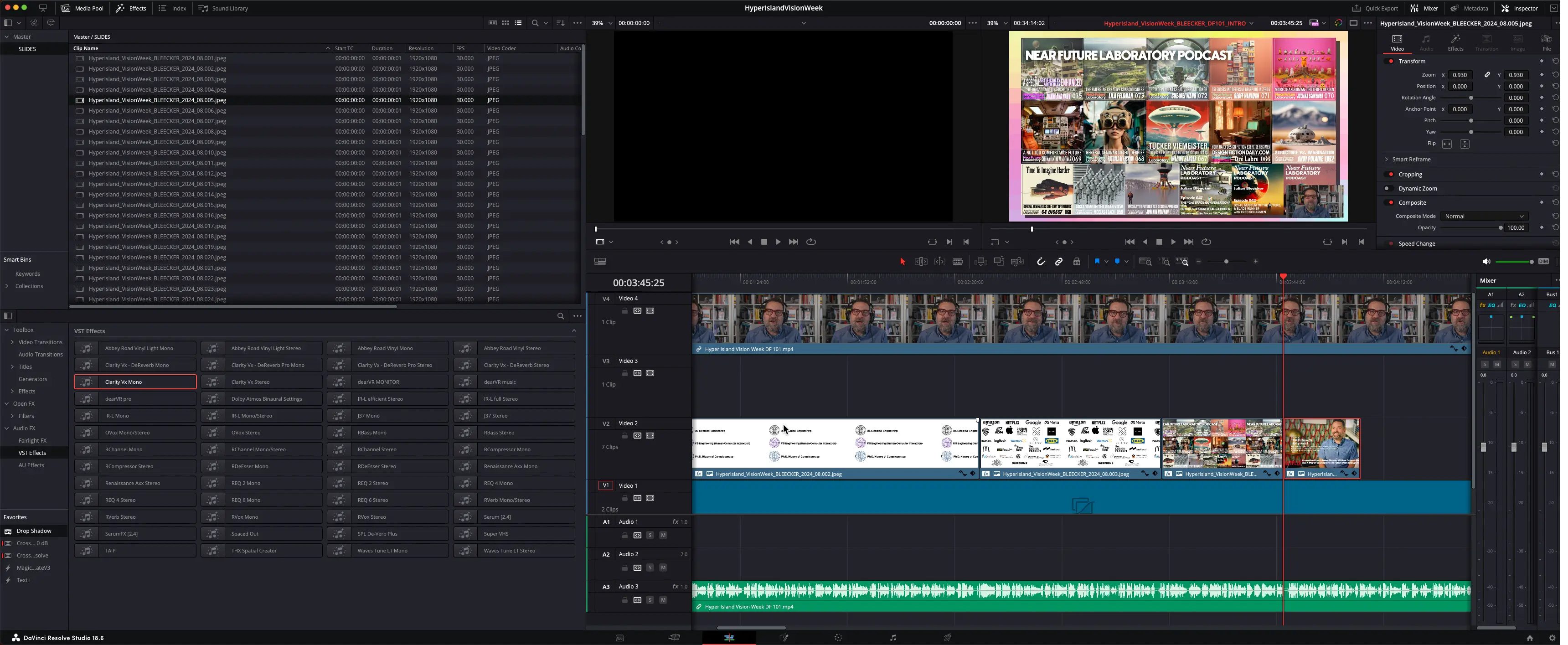Hyper Island x Near Future Laboratory
Let's make a 'podcast from the future
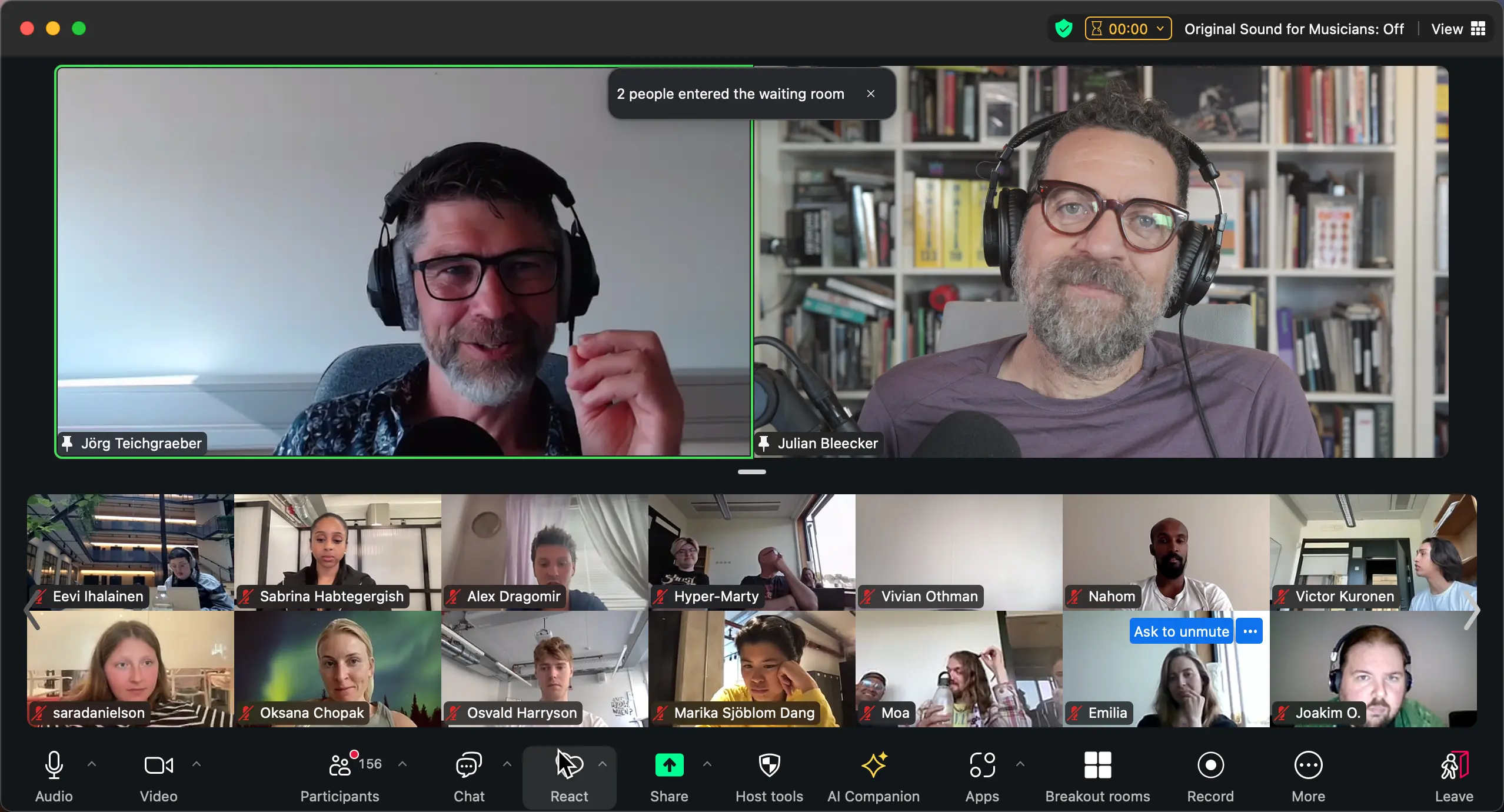
The Workshop
91 Podcasts in 24 Hours! Hyper Island Vision Week at Hyper Island is a dedicated period where students are encouraged to stretch their imagination as if it were a muscle, pushing beyond the boundaries of the everyday to envision new possibilities for themselves and society. This experience is designed not only to inspire but to challenge students to actively shape their futures through creative exploration and critical thinking. Jörg Teichgraeber invited me to contribute to Vision Week 2024 by facilitating a Design Fiction workshop for students. A 'podcast from the future' was the brief. A Design Fiction conceit in which students imagine into a future world and represent the contours of that world through a humble podcast that has come back from the future.
Summary
I helped facilitate a workshop for Hyper Island Vision Week: use Design Fiction to create a 'podcast from the future' — a Design Fiction conceit in which participants imagine into a future world and represent the contours of that world through a humble podcast that has come back from the future.
Written By: Julian Bleecker
Semantic Tags DESIGN FICTIONDESIGN SPRINTNEAR FUTUREWORKSHOP
hyper-island-vision-week-202491 Podcasts in 24 Hours!
Just like physical muscles, our imaginative faculties require regular exercise to grow stronger and more flexible. During Vision Week, students engage in activities that stimulate their creative thinking, allowing them to explore and develop new ideas in a supportive environment. This metaphor underscores the importance of continuous practice in nurturing the ability to envision alternative futures and innovative solutions.
During Vision Week I worked with Jörg Teichgraeber to prepare and facilitate a 24-hour design sprint focused on imagining into possibile futures through Design Fiction where we would merge creativity, speculation and Imagination with critical reflections to explore possible futures. The sprint’s brief was to imagining into an inhabited future as if one found a podcast from that future. This conceit invites students to immerse themselves in a near-future world that feels almost like today, yet with subtle, intriguing differences that hint at broader societal shifts. As an alternative to ‘top-down’ worldbuilding, this classic Design Fiction approach brings back artifacts that are like partial fragments of a possible world from the future.
We gave students a fun task: create a podcast episode that conveys the nuances of this imagined future. The podcast is the partial fragment implying various contours of the future. We encouraged students to to approach this challenge not by writing a traditional story, but by producing an artifact that implied the world such that it makes the future tangible and relatable to the podcast listener. The podcast could take the form of a news report, an interview, or a conversation, allowing students to explore how everyday life might evolve in unexpected ways.
For example, a student might choose to explore a future where purchasing “machine intelligences” at a convenience store is as normal as buying AAA batteries, prompting a podcast discussion about the societal implications of such technology. One of the more engaging and fun parts of the brief I thought was to encourage students to integrate fictional advertisements into the podcast, reflecting what advertisements are: representations of our hopes, fears, dreams, anxieties and desires. These kinds of things are what deepens the speculative, design fictional exploration.
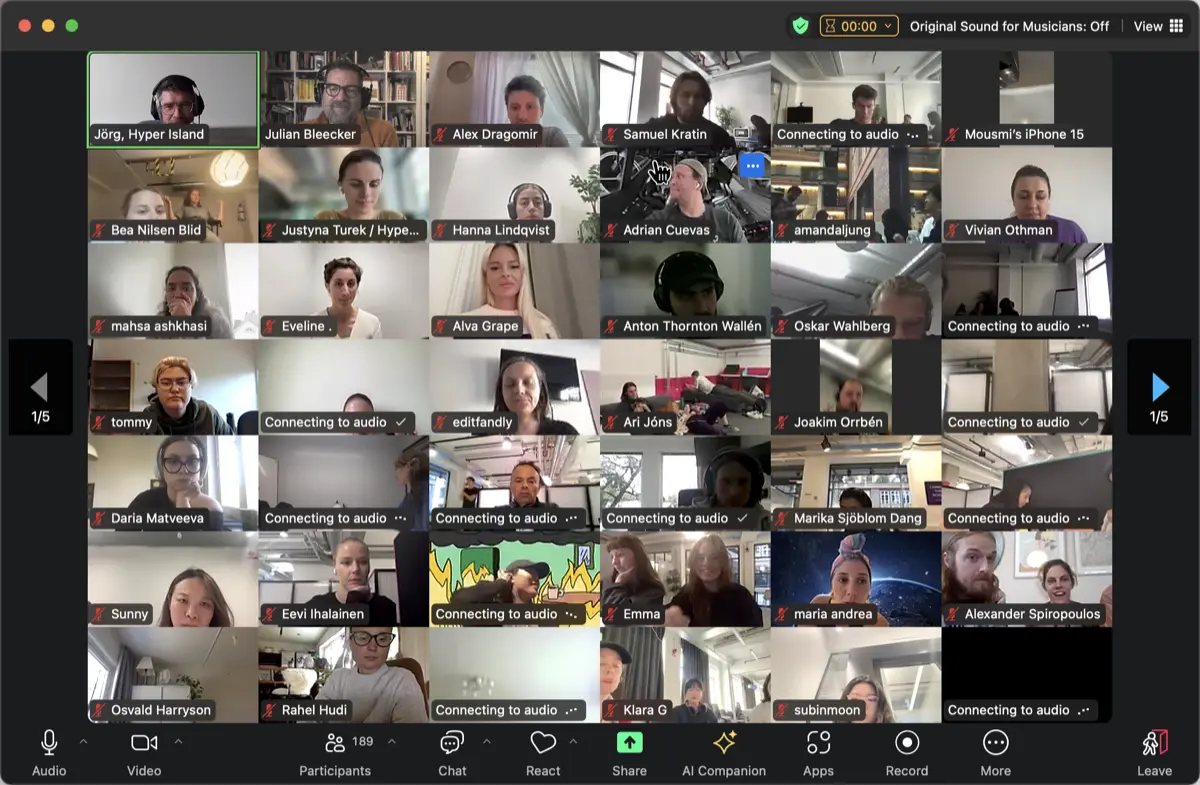
To facilitate remotely from Los Angeles (the week itself was more or less on CET), I pre-produced a ‘Design Fiction 101’ video that Jörg shared with the (300+) student-participants. This was the introduction to Design Fiction as well as a description of their assignment, the Design Fiction Design Sprint Design Brief.
I will say that the production of the video did take quite some effort, especially as I had just come off of vacation, was not entirely sure what to present, and only had about 12 hours to get everything done, wrapped, and sent over to Jörg and the team at Hyper Island.
I reworked an existing Design Fiction 101 slide deck, adjusting some things based on recent thinking and some evolved ideas and concepts. Then it was several hours recording myself as if I was presenting the slide deck. Then the next morning — before the deadline to get the video over to Sweden 9 hours ahead of me — I got into Davinci Resolve and spent more than a few hours (and one crash) editing things together with the slides integrated into the video presentation.
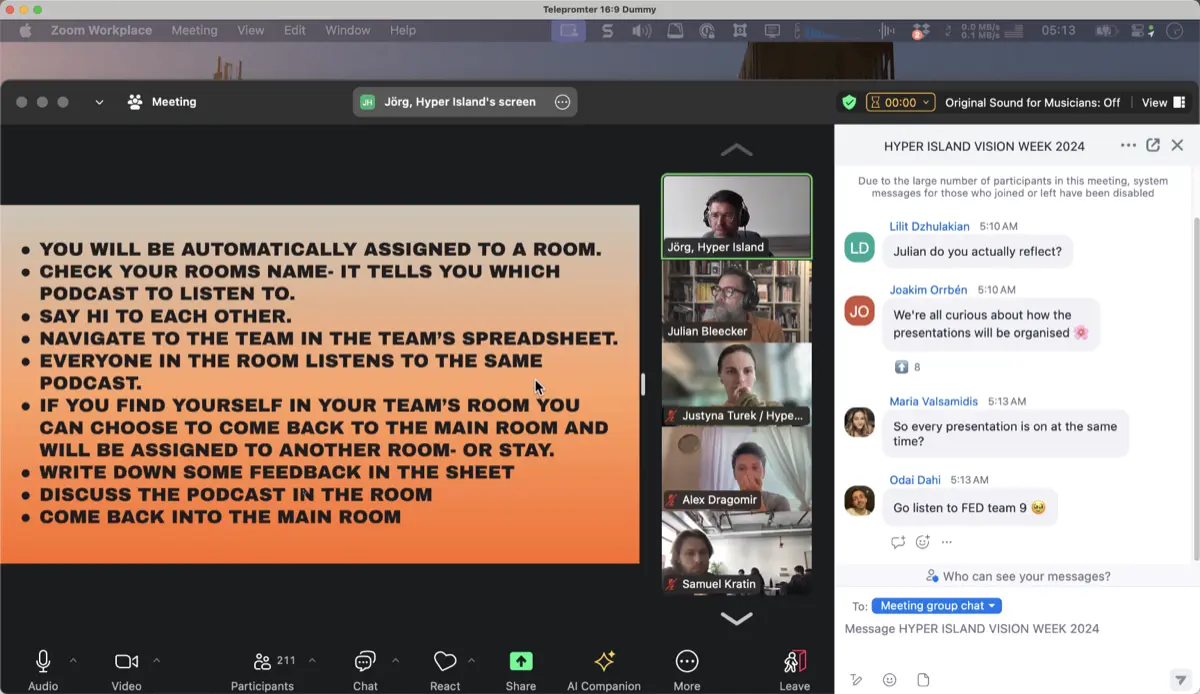
Students raised some great questions about whether to include technical aspects, how to build their world, and the right balance of tech/culture/human behaviors integration. I was satisfied and excited that we were able to highlight the importance of bringing Imagination to the effort, the value of iterative creativity and exploration — and fun.
Here was the written Design Fiction Design Sprint Design Brief 👇🏽
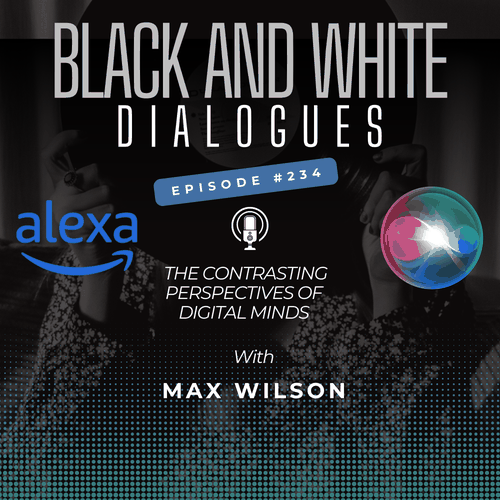
Briefly..A Random Few Of The 91(!) Podcasts Produced In The 24 Hour Sprint
p.s. These are summaries of the students’ actual audio podcasts, which had with sound effects, commercial breaks — everything! Maybe someday I’ll host a few of these.
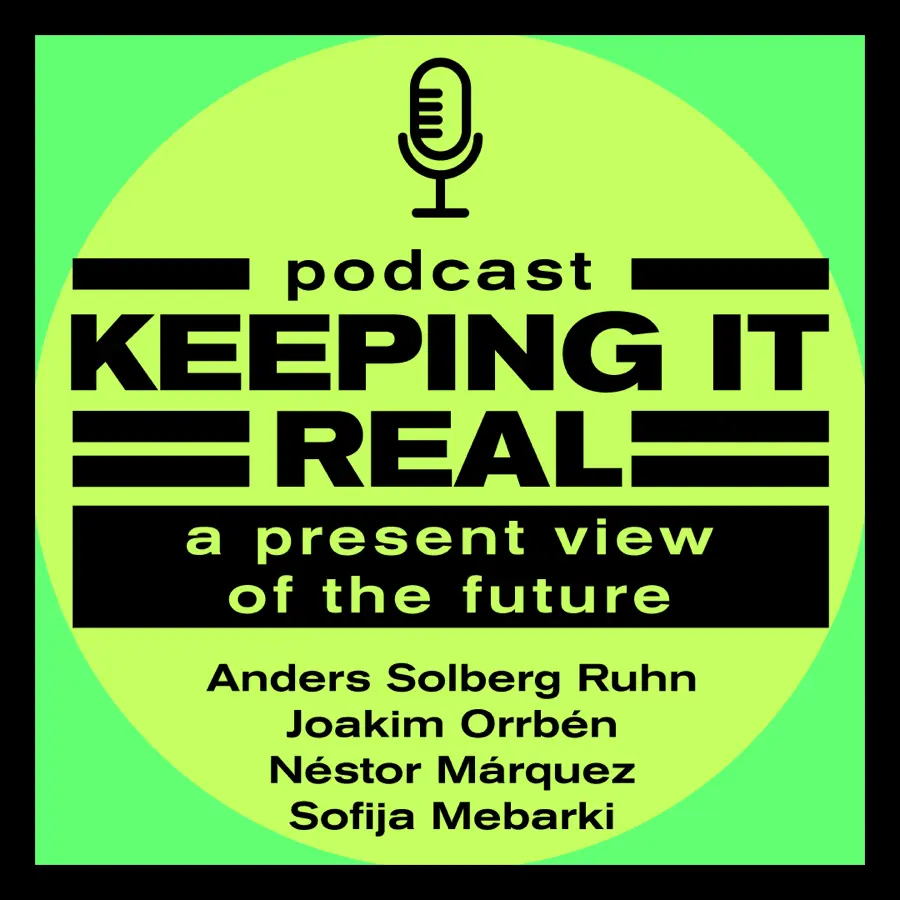
MCE25 Team 3 - Keeping It Real Podcast
In ‘Keeping It Real’ Anders and Sofia discuss the new Civic Index (CI) regulations and soaring unemployment rates. We come to discern that the CI is some kind of measure of participation in meaningful social actions and activities. Depending on one’s “CI” one is able to obtain certain benefits and services, such as free public transit. But, as we find out in one of the interviews — if your CI gets too low, it can be difficult to ‘climb back up’! Special guests Erik, a line worker, and Tomas, a former teacher, share how these changes and AI advancements are impacting their lives and scores. The podcast concludes with the ‘Weekly Whistleblower’ — a feature that ‘this week’ is a story about a worker trapped by smart home tech. They also put in some fun audio advertisements: a ‘new’ album by Tupac; and a slightly snake-oil enticement for a service to help you keep up your “CI”.
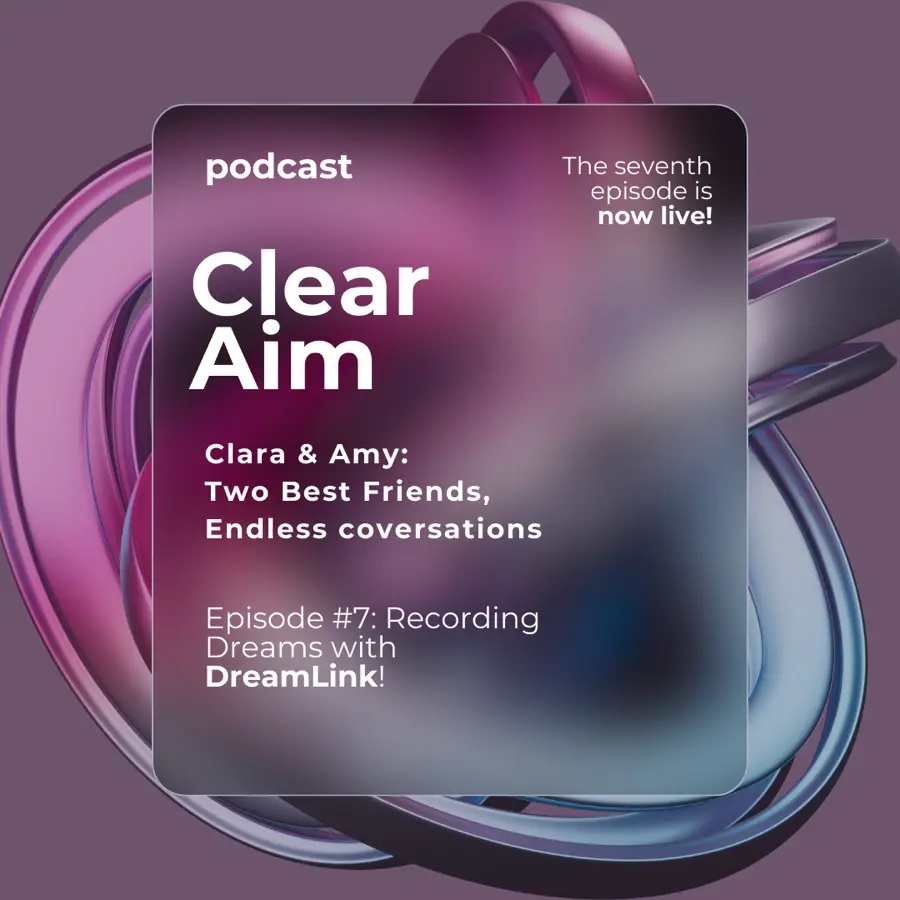
MCE25 Team 8 - Clear Aim Podcast
Clear Aim is a weekly podcast, hosted by two best friends, Clara and Amy who discuss emerging topics in life. Each week, they challenge each other with new questions, dive into the latest trends, uncover hidden gems and give their candid thoughts on everything from their personal growth to the ever- changing world around them. Settle in and listen to the latest episode of the Clear Aim Podcast.
In the submitted ‘episode’, Amy and Clara discuss ‘dream recording technology.’ They discuss the potential benefits and risks of this new advancement, including its therapeutic applications for memory issues and mental health, as well as concerns about privacy, ownership of dreams, and socio-economic disparities. They are joined by ‘Dr. Thompson’, who provides a scientific perspective on how this technology could revolutionize our understanding of the human mind. Advertisements appear as Design Fiction ‘sponsors’ for the episode include Dreamlink and Sleepguard, both offering tech solutions to enhance and protect dream recording. Fun!
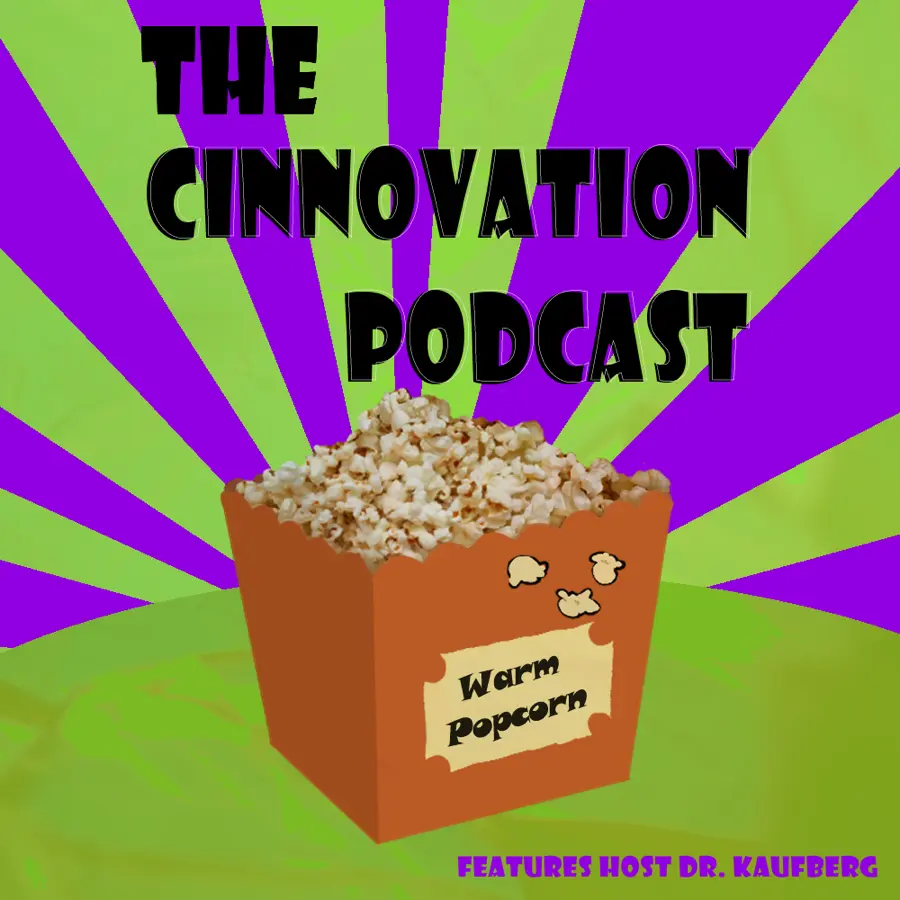
MD26 Team 3 - Cineovation Podcast
Implying a possible ‘future of film/Hollywood’ this episode of the Cinevation Podcast with host Dr. Kaufberg and co-host Miss Hype dives into the differences between watching films at home versus at the cinema. Kaufberg and Hype wonder around their nostalgia, reminiscing about the charm of ‘classic’ cinema experiences and address the current challenges faced by moviegoers, such as the high costs and accessibility issues of traditional theaters. The focal point, however, is on the ‘Moving Movies’ phenomenon — a clue indicating that in their future imaginary, movie screenings are hosted in trucks traveling to various locations. Love this. The two also explore how this has the potential to revitalize the communal cinema experience, making it easier and more special for families. Special guest Ms. Haydn shares her personal experience with ‘Moving Movies,’ highlighting the exclusive films and unique merchandise offered. The episode concludes with a look at the new cinema experience ‘Alien number 55,’ set to premiere soon. Advertisements are featured for Caramel Banana Brewery (🍬 🍺) and Tire Tires…the tire that makes flat tires inflatable..natch..
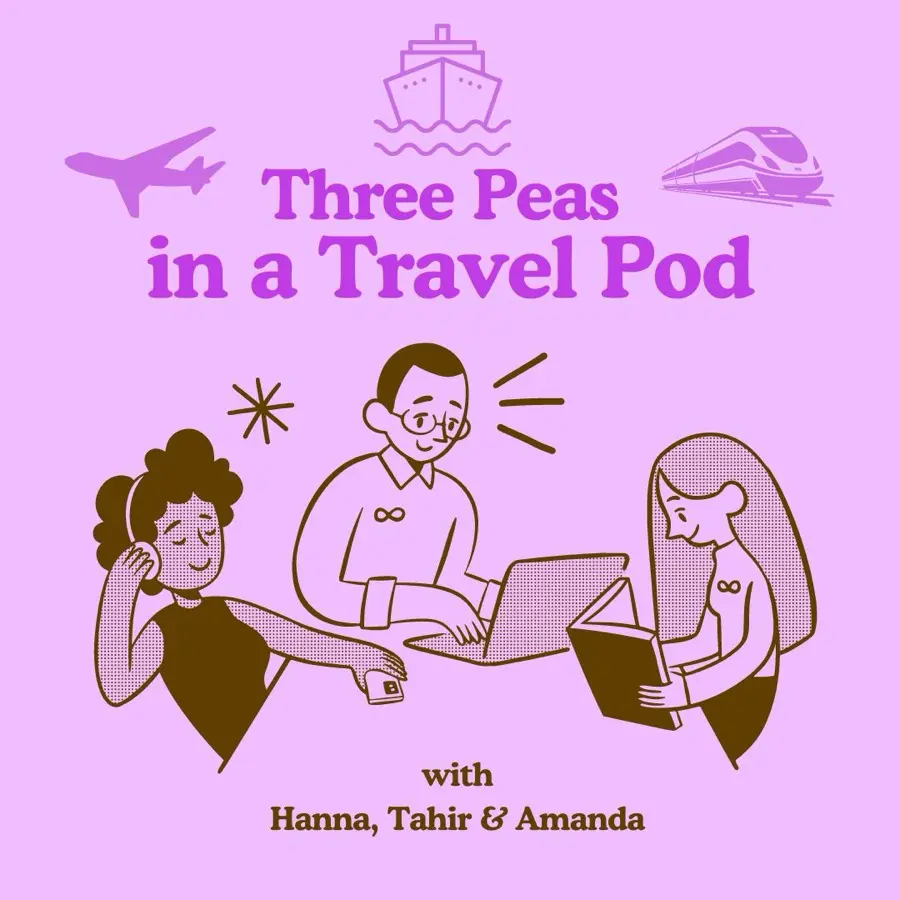
FED 26 Team 7 - Three Peas in a Travel Pod
A podcast that hints at the Future of Travel, ‘Three Piece in a Travel Pod’ shares the curious travel experiences of the hosts Amanda, Tahir, and Hannah, focusing on the journey rather than the destination. Amanda talks about her train trip to Barcelona, and the useful bathroom vacancy app she used and a meat-flavored energy drink 🤮. Hannah shares her soothing ride on a themed bullet train through Milan, complete with a forest canopy ceiling. Tahir describes his luxurious flight experience aboard an AI-piloted 👩🏽✈️🤖 airplane 🛩️ while traveling for a neurosurgical operation. The hosts discuss the various curious characteristics of metamodern travel and how they feel about all of the AI-controlled services — like autonomous airliners that fly ‘themselves’ — and other things that they wound up encountering on their journeys.
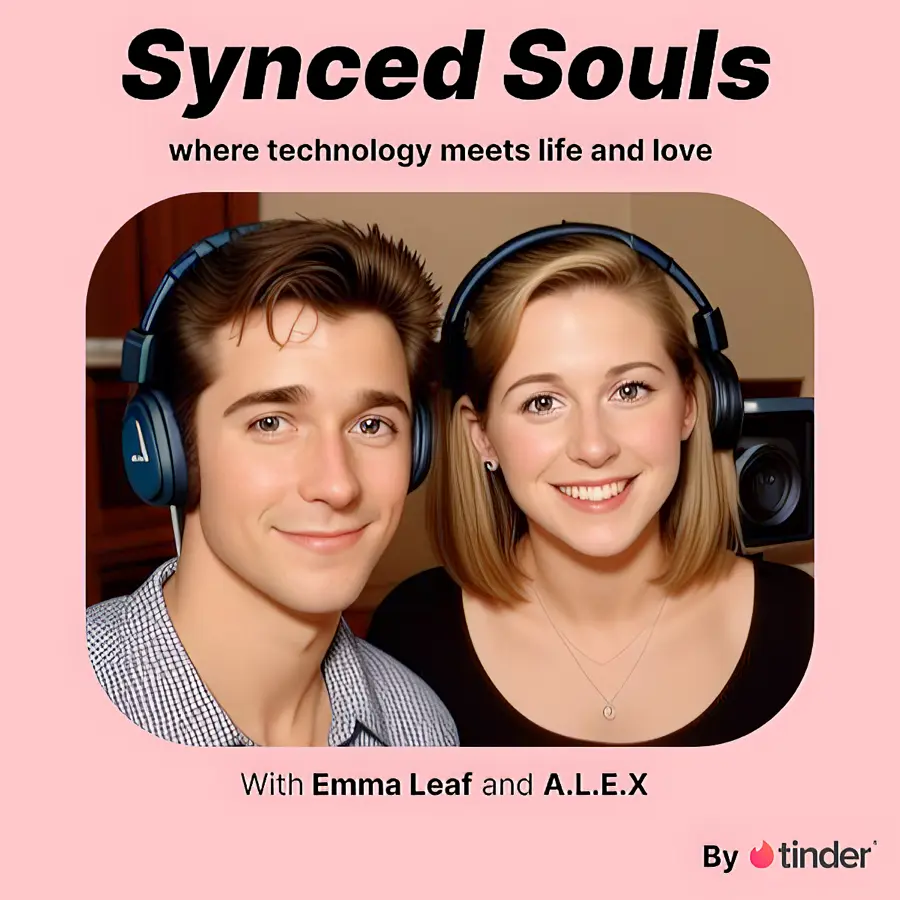
FED 26 Team 10 - Synced Souls
Future of Dating/Love/Relationship/Romance, natch..’Synced Souls’, hosted by Emma Leif with robot co-host Alex from Tinder, the focus is on Alex’s complex love life. Following a difficult separation from Michael, Alex shares the challenges of dating someone who lacked boundaries and initiative. And then to add to the complexity, Alex starts a relationship with Sarah, highlighting her ambition, quirks, and the weird dynamics they each bring to the partnership. Emma offers some insights, trying to help the robot comprehend the chaotic dimensionality of human emotions, including fear and habits. Emma tries to help Alex understand these nuances. Might be too much for this evoluton of Alex’s firmware! The episode wraps up with Alex considering updates to his programming to foster deeper human connections, and a discussion on the immersive experience offered by ‘Vroom’ VR glasses.
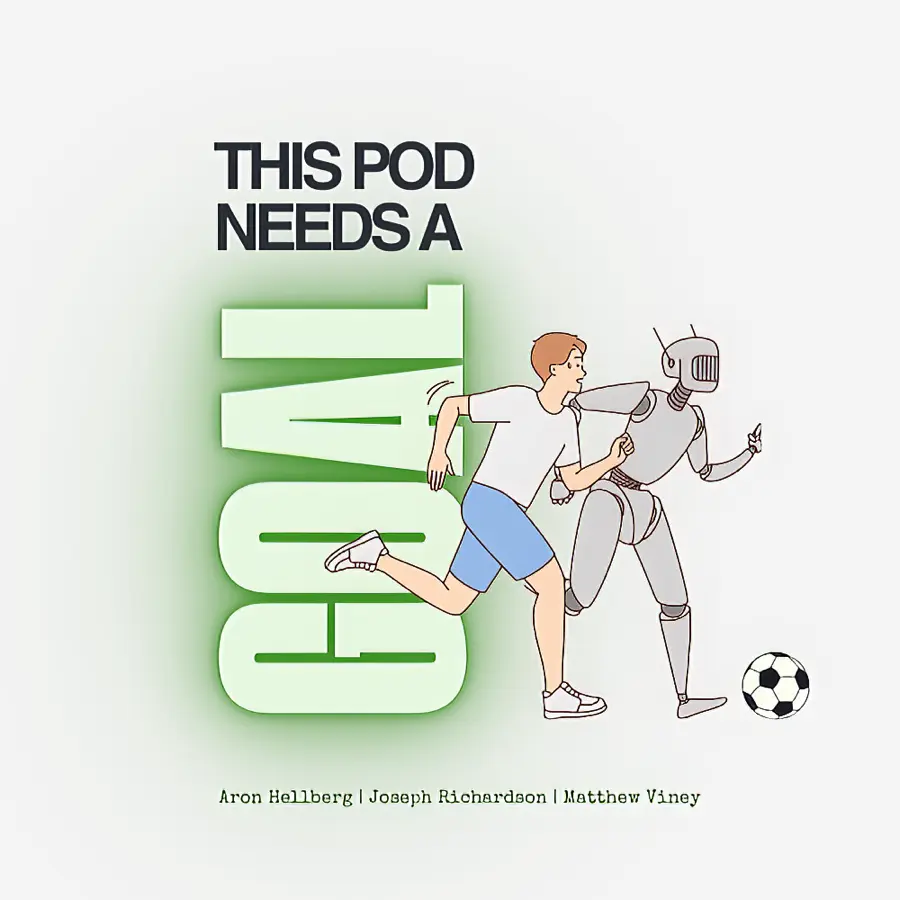
DA 26 Team 9 - This Pod Needs A Goal
‘Future of Sports’ is what ‘This Pod Needs A Goal’ hosts Joe and his friends Aaron and Matty get into. They talk about ‘neo football’ and ‘classic football’ (um…oh yeah..soccer), review intense matches, including a quirky Chelsea vs. Barcelona showdown and a dramatic Manchester United vs. PSG esports outcome where it seems that games..err..matches are played simultaneously as ‘eSports’ and IRL games with, like..humans on the pitch. The hosts also touch on a scandal involving an eSports player and the controversial use of Red Bull for performance enhancement. The episode includes a juicy gossip segment about a famous ex-player with several AI girlfriends and concludes with a nostalgic segment about the old school football results. The podcast features ads for Brain Bomb energy drink and Brobot Buddy AI companion. Also, we hear an announcement for a competition winner who gets an immersive VR football experience and, well — it seems we still have Patreon in this future as the hosts thank their Patreon supporters. Nice!
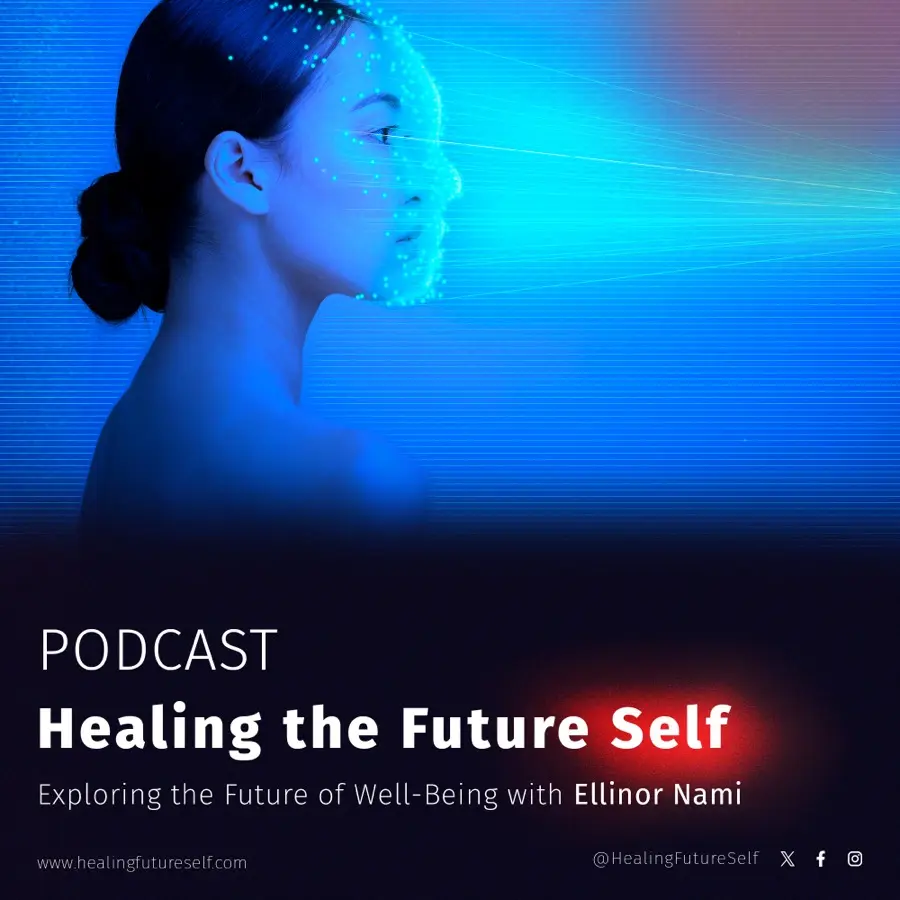
BD25 Team 3 — Healing the Future Self
‘Future of Exosomatic Health’ is the subject of the ‘Healing the Future Self Podcast,’ hosted by Elie. The pod gets into the evolution of the human energy field, also known as the aura, and its significance in alternative medicine and spiritual practices in this future. Elie covers how practices like Reiki and acupuncture have always had the aim of balancing these fields for overall wellbeing. We’re introduced to “AuraScan”, an instrumentality that provides personalized insights into one’s energy field. A 30-year-old veterinarian from Sweden is Elie’s guest, sharing her personal story of healing from a heartbreak with the help of AuraScan. The guest elaborates on how the scan identified imbalances in her emotional and mental energy, and how it offered a unique approach compared to traditional medical methods. The episode also features a clever, fun advertisement for the ‘Serenity Shield’, a wearable aimed at creating a protective energy barrier against stress and anxiety. Who wouldn’t want one of those, eh? The episode wraps up with a teaser for the next episode, which will discuss the EternaPill, touching upon innovations imagined in anti-aging technology.
Imagining the Future Through Your Very Own Podcast Episode
A Design Fiction Design Sprint Design Brief
Let’s imagine that we’re in some near future world.
It feels a bit like today, in fact — but we know that it is not quite today.
We notice some things that are slightly…”off”.
You might step into a corner convenience store — a bodega, or Quick-E-Mart.
The sights and sounds are familiar.
There’s the hum of the refrigerators with row after row of canned beverages, a bewildering assortment of bottled water, cartons of milk, ice cream.
Generic happy-pop-music helps you amble cheerfully through cluttered rows of dry goods with familiar brand logos — pasta, rice, candy bars, chips, nutritional supplements.
You don’t see what you’re looking for after rooting around in the aisles of miscellaneous home goods and necessities. You see AAA batteries, pet toys, cheap sunglasses, hand towels, toothbrushes, sunscreen, disposable razors, pens, pencils, tape, notebooks..the variety of “stuff” seems familiar and entirely normal, even as you consider that, wow — there’s lots of things in the world.
Finally you give in and ask the clerk, “I’m looking for your machine intelligences? Where are they? They used to be here by the batteries and stuff. I’m looking for the Birnbaum Intelligences in the 3 Pack? The LegalAir ones? 15 minute consultation size, if you have it.”
“I keep those behind the counter. New district rules — 18 and over with ID.”
“Ah. Sure. Of course. I’ll take one pack. That should do for negotiating a parking fine, don’t you think? How much?”
***
We often think of “the future” as full of fantastical other wordly things like flying cars, jet packs, effortless commutes, everyone happy. Or, it’s the opposite — a smoldering ruin of apocalyptic decay and strife.
What about the world that feels more like “today”? The one that is both curious, strange, unsettling, beautiful, full of life while also challenging and conflicted. The “today” where we take for granted that we all have maps of the entire world — in the palm of our hand. The “today” where we take for granted the availability of portable power — batteries and rechargeable devices. The “today” where we take for granted that we can walk into a convenience store and purchase a device that will let us make a phone call to anywhere in the world.
How might you tell the story of near future you imagine — if you were the host of a podcast to report on it, or interview a celebrity, a musician, a politician, a scientist, a ‘person on the street’, a professor, an entrepreneur, a sports star, a journalist?
If I were to host a podcast that conveyed the sense of my imaginary wander through the convenience store above, I might do a “person-on-the-street” style interview with the convenience store clerk.
I would “ask” them their perspective on the new rules for sales of these ‘machine intelligences’.
The clerk might say that sales have fallen off since these new rules, but it’s probably better because some kids were getting into trouble with them, using them to figure out how to get out of petty crimes like skateboarding on sidewalks..”they really shouldn’t be doing that in the first place.”
My podcast might include a happy 15 second advertisement for the new Snickers Bar “with the hypoallergenic peanuts — now safe for those with nut allergies!”
And when you come back from the advertisement, I might continue with another short segment on the impacts these “machine intelligences” that you can buy at the convenience store have impacted the legal profession, positively and negatively, with short commentary from a lawyer, a judge, and a law professor — and a word from a PR person from “Birnbaum Intelligences Corp”, arguing how they are allowing regular people to save money and making the legal system more efficient, “These devices interface directly with a third party arbitration network, fully secure in the cloud — and resolve disputes in a matter of milliseconds, when it used to take weeks, months or years clogging up our courts, which can now focus on issues that really matter..not parking tickets and nuisance misdemeanors.”
So — can you imagine from the future as if you went there? Can you imagine from the future by creating an artifact like a podcast — as if the future you imagine exists and this was just another person doing yet another podcast?
Rather than writing a science-fiction story, or predicting this or that outcome from AI or climate change or social media we want you to imagine the future by producing a short podcast.
THE BRIEF
Create an audio podcast from some possible future. Consider topics that are relevant to you and of the moment: futures of work, futures of entertainment, futures of education.
DO
Your podcast need be only as long as necessary to give a sense of “the world” you are imagining. It should be observational rather than a first-person narrative, or diaristic. Interview, reporting, conversation between host and co-host(s), etc. Think of it more like a news report, interview show, etc.
Consider including “advertisements”: these are great ways of reflecting on the hopes, fears, dreams, desires of the larger culture(s). What do people feel they need more of: (money, work, vacation, food, companionship)? What are their concerns that some product mitigates” insurance, itchy feet, broken heart, mean parents, loneliness, can I be smarter?
This is a podcast, right? Create a trailer and cover art to go along with your podcast. Maybe collaborate with other teams to cross-promote amongst each other, the way “real” podcasts might do.
DO NOT
Avoid specifying dates. Over-indexing on “when” according to calendars makes the podcast seem obviously “fake” or “fictional”. We want to introduce a sense in the listeners that they are not quite sure what is going on.
PRACTICALITIES
It helps to script yourself, record your rehearsals, and listen back to yourself.
ElevenLabs is a wellspring of tools for doing voice synthesis.
Descript can help immensely with recording and editing — it allows you to edit by manipulating the transcript of your recordings.
OUTCOMES
A podcast in MP3 format, as long as it needs to be, but no less than 10 minutes and no longer than 30 minutes.
A “trailer” for the podcast in MP3 format, of no more than 30 seconds in length.
Cover art for the podcast, square aspect ratio (1:1) that includes the name of your show, and host(s) names included.
Text description of the podcast, as you might see for any (real) podcast.
